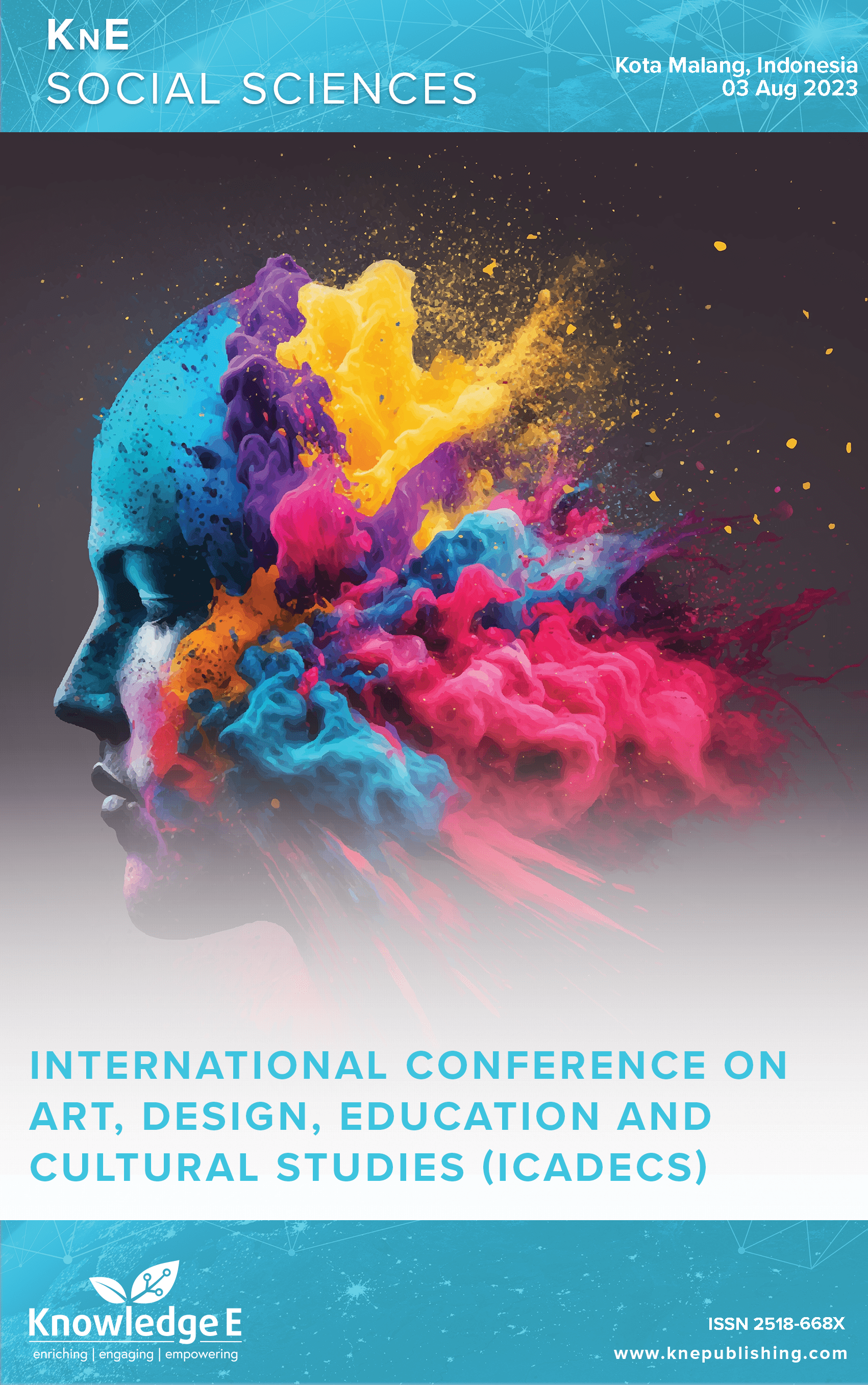Comical Attractions of Hanoman as Commercial Tractive Power of Kecak Ramayana in Pura Uluwatu Bali
DOI:
https://doi.org/10.18502/kss.v9i15.16197Abstract
The article examines the commercial tractive power of Kecak Ramayana in Pura Uluwatu Bali. Kecak Ramayana has become tourism commodity since 1930s, thanks to I Wayan Limbak and Walter Spies. One of characters in Kecak Ramayana is Hanoman, considered as the most attractive character. The Ramayana Story is a sacred epic recounting the struggle of Sri Rama against the evil of Rahwana, King of Alengka. Foreign tourists love this story and seem fairly enthusiastic to see the show. The number of foreigners who come to see Kecak Ramayana has increased every year, impacting the commercialization of Kecak Ramayana as tourism art. The tractive power behind the show becomes the question that warrants exploration. The research methodology employs observational qualitative descriptive, gathering data from interview and field observation. Data analysis involves two techniques, namely visual textual descriptive and interpretative. The result of research consists of three aspects, respectively (1) the role of Hanoman character in Kecak Ramayana, (2) the comedic allure of Hanoman as spectator decoy, and (3) the impact of Hanoman’s comedic appeal on the commercial success of Kecak Ramayana.
Keywords: kecak Ramayana, tourism commodity, tourism art
References
Wigantara A, Suryasih IA. “Peranan Desa Adat Pecatu Dalam Pelestarian Daya Tarik Wisata Pura Uluwatu Di Kabupaten Badung,” J. Destin. Pariwisata. 2014;2(2):86–97.
Lodra IN. Tari Sanghyang: Media Komunikasi Spiritual Manusia Dengan Roh. Harmoni. 2018;16(2):241–53. DOI: https://doi.org/10.32488/harmoni.v16i2.19
Hidajat R, Yanuartuti S, Jamnongsarn S, Sastra F, Malang UN, Surabaya UN. DARI RITUAL KE SENI PERTUNJUKAN PADA KECAK RAMAYANA. 2023;8(1):68–77. DOI: https://doi.org/10.17977/um037v8i12023p68-77
Hersapandi H. Sendratari Rara Jonggrang Dalam Perspektif Koreografis dan Pariwisata. Panggung. 2017;27(2): https://doi.org/10.26742/panggung.v27i2.259. DOI: https://doi.org/10.26742/panggung.v27i2.259
Prasodjo T. Pengembangan Pariwisata Budaya dalam Perspektif Pelayanan Publik. J. Off. 2017;3(1):1–7. DOI: https://doi.org/10.26858/jo.v3i1.3448
Hidajat R, Pujiyanto I. Prastiawan, Wiflihani, R. Rochayati, and A. Suharyanto, “Tourism performances management patterns and the role of maecenas in ramayana play presentation as a tourist attraction in Indonesia and Thailand,” Proc. Int. Conf. Ind. Eng. Oper. Manag., pp. 4404–4410, 2021. DOI: https://doi.org/10.46254/AN11.20210775
Solehudin A, Fathama A, Aryani NP, Hukum F. “Pemanfaatan Tari Kecak Sebagai Ekonomi Kreatif Untuk Peningkatan Perekonomian Daerah,” l Pendidikan, Seni, Sains dan Sos. Humanioral. 2023;1(1):1–15.
Dellios R. “Mandala : from sacred origins to sovereign affairs in traditional Southeast Asia,” Cent. East-West Cult. Econ. Stud. 2003;13(3):1–16.
S. Sumiati and L. R. Girsang, “Konstruksi Pesan Tari ‘Kecak’ Pada Masyarakat Badung, Bali,” Bricol. J. Magister Ilmu Komun., vol. 4, no. 01, p. 064, 2018, https://doi.org/10.30813/bricolage.v4i01.1653. DOI: https://doi.org/10.30813/bricolage.v4i01.1653
K. Stepputat, “PERFORMING KECAK : A BALINESE DANCE TRADITION BETWEEN DAILY ROUTINE AND CREATIVE ART Author (s) : Kendra Stepputat Source : Yearbook for Traditional Music, Vol . 44 (2012) , pp . 49-70 Published by : International Council for Traditional Music Stable U,” vol. 44, no. 2012. International Council for Traditional Music, pp. 49–70, 2018. https://doi.org/10.5921/yeartradmusi.44.0049. DOI: https://doi.org/10.5921/yeartradmusi.44.0049
Putra Kencana IP, Mudana IG, Ardini NW. Identity of Kecak Touristic Performance in Uluwatu Temple. J. Music Sci. Technol. Ind. 2020;3(1):57–62. DOI: https://doi.org/10.31091/jomsti.v3i1.963
Hidajat R, Pujiyanto P, Suprihatin E, Hasiymy DM, Jamnongsarn S. Communication Presentation of Indonesian Identity Figures at the Ramayana Ballet at Prambanan. Perspektif. 2022;11(4):1242–9. DOI: https://doi.org/10.31289/perspektif.v11i4.7883
Dinda K, Krystyana A, Sutama IM, Artika IW. Proses Kreatif Bali Eksperimental Teater Serta Relevansinya terhadap Pembelajaran Drama. Ikat. Kel. Alumni Undiksha. 2023;21(1):17–26.
Hidajat R, Hasyimy MA, Wulandari S. Pelatihan Koreografi Bagi Warga Kampung Budaya Palawijen untuk Meningkatkan Daya Tarik Wisata. Caradde J. Pengabdi. Kpd. Masy. 2021;3(3):481–8.
Fadli MR. Memahami desain metode penelitian kualitatif. Humanika. 2021;21(1):33– 54. DOI: https://doi.org/10.21831/hum.v21i1.38075
Werdistira IW. Sejarah Perjalanan Danghyang Nirarta Serta Objek Wisata Religius di Pura Uluwatu. Cultoure. 2020;1(1):26–34.
H. K. Liestiandre, “Analisis Positioning Pura Uluwatu,” J. KEPARIWISATAAN, vol. 16, no. September 2017, pp. 11–20, 2019.
I. N. Rachmawati, “Pengumpulan Data Dalam Penelitian Kualitatif: WaRachmawati, I. N. (2007). Pengumpulan Data Dalam Penelitian Kualitatif: Wawancara. Jurnal Keperawatan Indonesia, 11(1), 35–40. https://doi.org/https://doi.org/10.7454/jki.v11i1.184wancara.,” J. Keperawatan Indones., vol. 11, no. 1, pp. 35–40, 2007. DOI: https://doi.org/10.7454/jki.v11i1.184
Yudiaryani, “Analisis Tekstual Pertunjukan Marco de Marinis (Teks-Konteks- Interteks),”. J. Ekspresi. 2007;1(08):1–20.
Howard BS. Herbert Blumer’s Conceptual Impact. Jastor. 2012;11(1):13–21. DOI: https://doi.org/10.1525/si.1988.11.1.13
Boy S. Sabarguna, Analisis Data Pada Penelitian Kualitatif. Bandung: Universitas Pendidikan Indonesia; 2020.
Hidajat R. Pujiyanto, Hartono, and M. ‘Afaf Hasyimy, “Aesthetical Transformation on Ramayana Stories of Indonesia- Thailand Versions,” Proc. 5th Int. Conf. Arts Lang. Cult. (ICALC 2020), vol. 534, no. 534, pp. 177–184, 2021, DOI: https://doi.org/10.2991/assehr.k.210226.063
Tjampan KM, Nugroho S. “Persepsi Pengunjung Domestik Terhadap Wisata Entertainment di Daya Tarik Wisata Kawasan Luar Pura Uluwatu,” J. Destin. Pariwisata. 2020;8(2):376. DOI: https://doi.org/10.24843/JDEPAR.2020.v08.i02.p28

